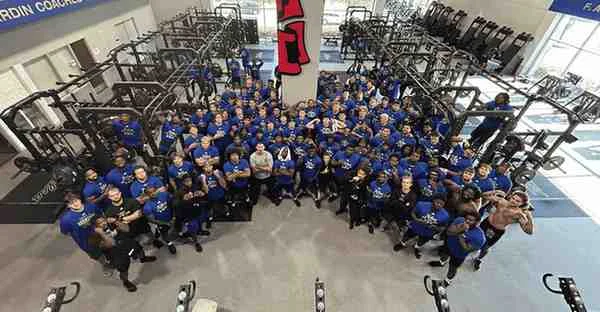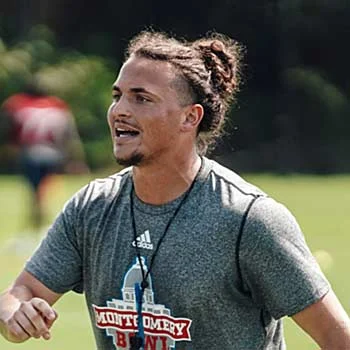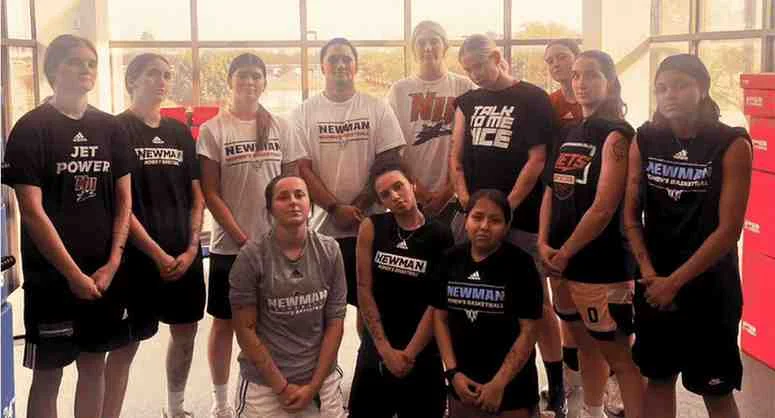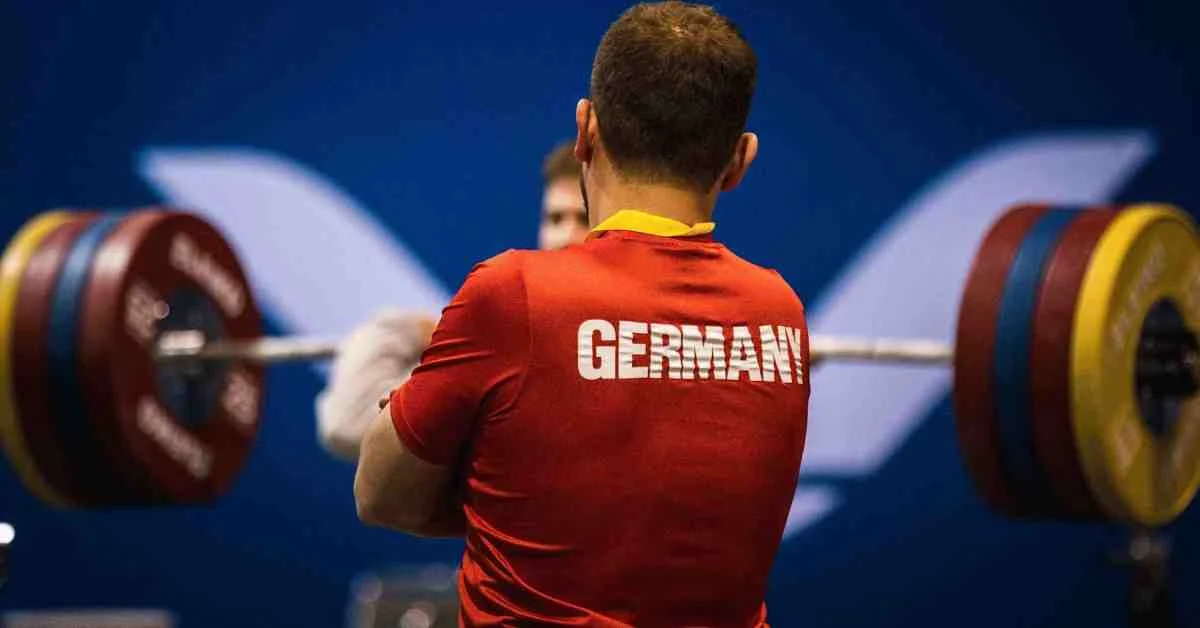Introduction:
Football is undeniably a collision sport at the macro level, but beneath that lies a spectrum of distinct qualities and outputs that our athletes need to perform at a high level for 60 minutes. Sport performance coaches cannot assume a one-size-fits-all approach to training, and there are different ways to improve performance for each position. There needs to be an understanding of energy systems demands, biomechanical demands, and even psychological demands for each position. Each athlete brings a unique profile of strengths, limitations, and positional requirements that must be identified and addressed through individualized programming (Hoffman & Maresh, 2000; Kraemer & Gotshalk, 2000; Stolen et al., 2005). The goal of training will always be to amplify the unique strengths that set each athlete apart, while strategically developing their weaknesses over time to build a more complete and robust athlete. By integrating data from tools like force plates, GPS/IMUs, and wellness monitoring, coaches can develop more precise training interventions that align with the athlete’s role, workload tolerance, and readiness to perform (Wellman et al., 2015; Lockie et al., 2014; National Strength and Conditioning Association, 2016; Winchester et al., 2008).
The chart below outlines a layered approach to athletic development, emphasizing how foundational physical capacities ultimately drive high-level performance in sports. As a sports performance coach, our goal is to build athletes from the outside in—starting with robust physical qualities like Rate of Force Development (RFD), peak force production, stretch-shortening cycle efficiency, and overall endurance (Reilly & Williams, 2005; Buckthorpe & Roi, 2015; Winchester et al., 2008). If these foundational qualities are strong, it will only raise the ceiling for all the other skills. Once those physical qualities are established, we layer in general movement skills such as acceleration, deceleration, change of direction, and top-end speed (Barnes et al., 2014; Glaister, 2005). For example, if the focus is on acceleration, every aspect of the day—from drills to lifts—is strategically selected to target the specific force, mechanics, and neuromuscular demands of efficient acceleration. From there, we progress into sport-specific skills such as blocking, tackling, evading, and tracking—components that are essential for success on the field. Typical tracking athletes include defensive backs, linebackers, and even offensive linemen. Anyone who needs to read and mirror the movement of another player is defined as a tracking athlete. Evading athletes are typically wide receivers, defensive linemen, and running backs. Anyone who needs to create space between them and an opponent to avoid getting tackled or create separation to make a move is defined as such. At the outermost layer is sport performance, where all these elements come together to enable faster, more precise gameplay. Each layer builds on the one before it, creating a continuum that ensures athletes are not just game-ready, but resilient, adaptable, and explosive. This model keeps our training focused, progressive, and aligned with the demands of football at the highest level (Hoffman & Maresh, 2000; Kraemer & Gotshalk, 2000). 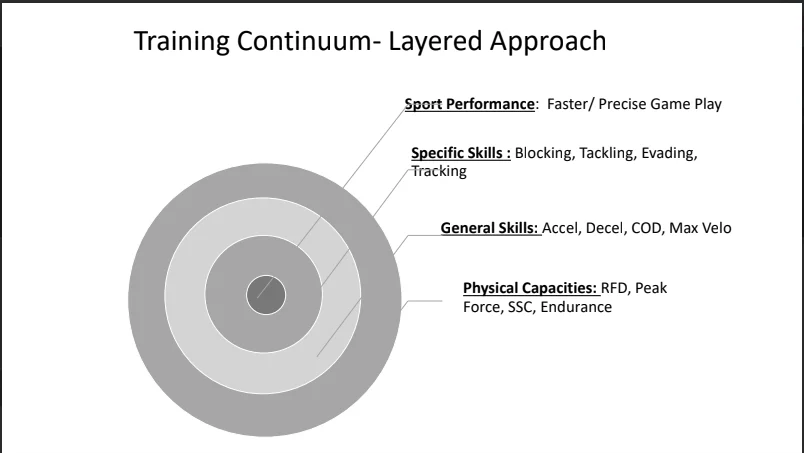
Image: A visual display of the “training continuum” of how a large bandwidth of general physical capacities filters down to specific traits of performance, leading to better game play via Hoffman & Maresh, 2000; Kraemer & Gotshalk, 2000
Positional Demands
When designing a position-specific training program for football athletes, it is essential to begin with a thorough needs analysis that aligns performance demands with the physiological qualities of the athletes. Each position group on the field faces unique biomechanical and metabolic challenges that must be reflected in their training preparation. Our training philosophy is rooted in building transferable qualities that bridge weight room outputs with on-field performance—this starts by understanding what the game requires from each athlete. Using integrated GPS data, we can break down total distance covered, sprint volume, high-speed yardage (HSY), and change of direction (COD) frequency to inform our conditioning strategies and exercise selection.
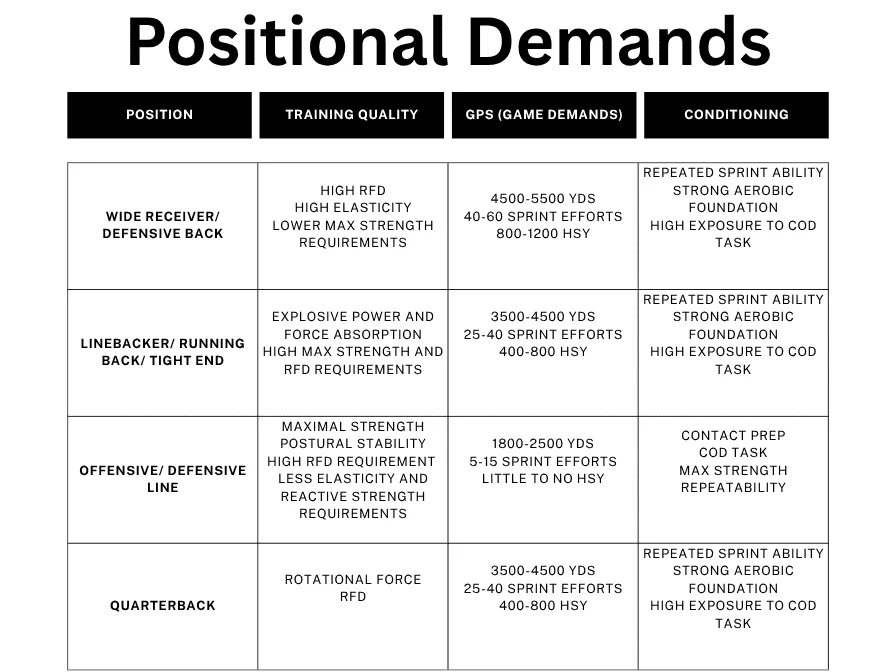
Image: Chart showing the different training needs of different positions in American football
This chart outlines the positional demands in American football by breaking down key performance qualities, game-based GPS metrics, and conditioning needs for each position group. It emphasizes that each position requires a unique combination of physical traits and training emphases. This is a brief overview of the demands of each position, and we understand that the details are more in-depth than this. Each position will still require a strong foundation in maximal strength to support other qualities, such as RFD and explosive strength. The same applies to having a strong aerobic base, which, in turn, will enhance the ceiling and recovery rates of these high-intensity efforts. Understanding these requirements will not only enable us to plan our programming effectively to ensure we meet these benchmarks, but it will also allow us to categorize athletes based on this data to maximize the benefits of our training. This chart supports the need for individualized training approaches that align physical development with actual game demands. By combining GPS data, positional roles, and specific qualities, coaches can create more targeted and effective training programs.
Force Plate Benchmarks
Countermovement jump (CMJ) metrics reveal distinct neuromuscular characteristics across football positions. Offensive and defensive linemen (OL/DL) generate the highest peak force but exhibit slower time to take-off and lower modified Reactive Strength Index (mod RSI), reflecting slower stretch-shortening cycle (SSC) transitions. Their elevated eccentric Rate of Force Development (RFD) supports the braking demands of collision play (Buckthorpe & Roi, 2015; Winchester et al., 2008).
Linebackers, running backs, and tight ends (LB/RB/TE) demonstrate a balanced profile with high peak force, moderate mod RSI, and explosive SSC efficiency, enabling rapid force production and agility. Skill players like wide receivers and defensive backs (WR/DB) show the fastest take-off times, highest mod RSI, and elevated eccentric RFD, favoring reactive and rapid directional changes. Quarterbacks (QB) present moderate values across variables, indicating balanced power and control.
The Dynamic Strength Index (DSI), calculated as CMJ peak force divided by Isometric Mid-Thigh Pull (IMTP) peak force, provides insight into how well maximal strength translates to explosive movements. OL/DL often have DSI > 0.80, signaling underutilization of ballistic power despite high strength. WR/DB typically ranges from 0.60 to 0.80, striking a balance between strength and explosiveness. LB/RB and QB often fall below 0.60, indicating a need to improve ballistic capabilities (National Strength and Conditioning Association, 2016).
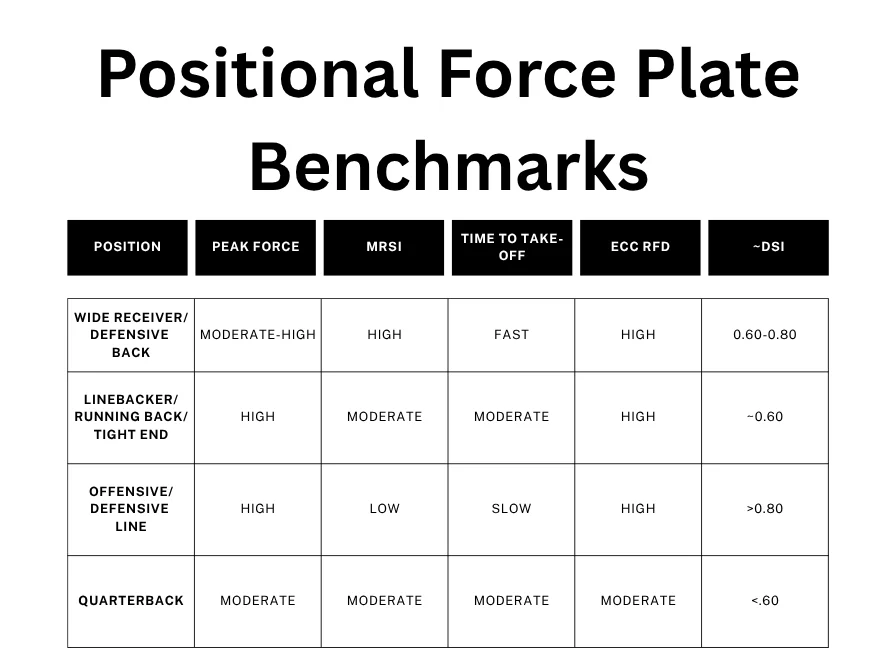
Image: Chart showing benchmarks for various traits measured on force plates, separated by position group
Utilizing force plates and establishing position- and athlete-specific benchmarks provides a powerful lens through which we can accurately profile athletes. By measuring key variables such as rate of force development, modified RSI, eccentric RFD, and reactive strength index, we gain objective insight into an athlete’s neuromuscular capabilities and movement strategies. This allows us to identify performance strengths, target specific deficiencies, and monitor adaptations over time. With clear benchmarks, we can individualize training based on positional needs and developmental priorities, ensuring each athlete is progressing toward qualities that directly enhance on-field performance. Ultimately, force plate profiling helps bridge the gap between assessment and application, making training more intentional, efficient, and sport-specific.
Utilizing force plates and establishing position- and athlete-specific benchmarks provides a powerful lens through which we can accurately profile athletes. By measuring key variables such as rate of force development, modified RSI, eccentric RFD, and reactive strength index, we gain objective insight into an athlete’s neuromuscular capabilities and movement strategies.
Video: Football Players at the University of Tulsa Performing a Hands on Hips Countermovement Jump on Force Plates
This enables us to identify performance strengths, target specific deficiencies, and track progress over time. With clear benchmarks, we can individualize training based on positional needs and developmental priorities, ensuring each athlete is progressing toward qualities that directly enhance on-field performance. Ultimately, force plate profiling helps bridge the gap between assessment and application, making training more intentional, efficient, and sport-specific.
When an athlete falls short of position-specific benchmarks identified through force plate profiling, it presents a valuable opportunity for targeted intervention. For example, if a lineman demonstrates high peak force but a low DSI and mod RSI, training should emphasize ballistic and plyometric work to improve rapid force expression and stretch-shortening cycle efficiency (Winchester et al., 2008). Conversely, if a skill player like a WR or DB exhibits high reactivity but lacks peak force or eccentric RFD, integrating maximal strength training and eccentric loading can enhance their ability to absorb and redirect force. These interventions must be strategically programmed to address the limiting qualities without detracting from the qualities that will make them elite in their position first (National Strength and Conditioning Association, 2016). Over time, this focused approach helps close the gap between current output and positional demands, fostering more complete and resilient athletes. By continuously monitoring progress through follow-up assessments, we can adjust training variables in real-time to ensure that adaptations are occurring in the intended direction. This allows us to have data that directly informs programming decisions, making training both demanding and individualized. Ultimately, the goal is not just to improve these qualities but to enhance the transfer of those qualities to game-specific movements and demands, ensuring athletes are physically prepared to excel in their unique roles on the field (Hoffman & Maresh, 2000). game-specific movements and demands, ensuring athletes are physically prepared to excel in their unique roles on the field.
The goal is not just to improve these qualities but to enhance the transfer to game-specific movements and demands, ensuring athletes are physically prepared to excel in their unique roles on the field, says @CoachJoeyG and @CoachZackC Share on XPosition-Specific Profiling in Football
Sports performance coaches must consider not only the general demands of each position but also how those positions are utilized explicitly within a given team’s system. While broad descriptions of positions—such as wide receivers needing high maximum velocity thresholds or linemen requiring high maximal strength outputs—provide a helpful starting point, they offer only a vague and generalized understanding of performance needs. In reality, the way a position is played can vary significantly between teams depending on offensive or defensive schemes, tempo, play-calling tendencies, and coaching philosophy. The following descriptions provide a general overview of each position; however, it is essential to note that individual roles can vary significantly depending on the team’s structure and system. Depending on how your athletes are utilized within that framework, you may need to prioritize certain physical qualities more heavily, or conversely, scale back the emphasis on others to better align with the specific demands of their position. Effective programming requires this level of adaptability to ensure training remains positionally relevant and performance-focused.
Video: Football Players for the University of Tulsa Performing Back Squats with Video Based Velocity Based Training
Football positions demand unique physical attributes, which can be precisely profiled using force plate metrics combined with GPS and inertial measurement unit (IMU) data. For skill positions such as wide receivers (WR) and defensive backs (DB), a high Reactive Strength Index (RSI) and Rate of Force Development (RFD) are characteristic of their need for explosive power and the utilization of a rapid stretch-shortening cycle (SSC). GPS/IMU data show these players cover the greatest distances at high speeds, with frequent decelerations and moderate physical contact. Their training emphasizes plyometric exercises, sprint resistance, and reactive agility drills to optimize rapid force production and neuromuscular responsiveness. By emphasizing these qualities in our training, we are moving the needle in a positive direction and building on what makes these skill players special.
Linebackers (LBs) and running backs (RBs) exhibit a hybrid profile, combining strength with SSC capabilities. Their load profiles indicate high acceleration and deceleration demands, moderate total distance, and high levels of contact. Accordingly, their training integrates strength and power development with agility and directional change drills, along with contact preparedness to meet the dynamic demands of their roles (Stolen et al., 2005; Wellman et al., 2015). They will not have as much high-speed running and overall distance as our skill players, but that does not mean we take maximal sprinting out of the plan for our linebackers and running backs as well. All foundational qualities should still be developed—just in the right proportion—to ensure these athletes are well-rounded, resilient, and capable of adapting to the full spectrum of demands they face on the field (Glaister, 2005; Winchester et al., 2008).
Quarterbacks (QBs) will exhibit a hybrid profile, similar to our linebackers and running backs. The maximal strength requirements will not be as high, but still need to be efficient at utilizing the SSC and exposed to high-intensity accelerations and decelerations. GPS/IMU data reflect moderate overall volumes but significant inertial loads from rotational and deceleration actions. Thus, training prioritizes rotational core stability, controlled deceleration, and agility to manage inertial forces and enhance on-field performance.
Offensive and defensive linemen (OL/DL) demonstrate peak force production but operate with slower SSC characteristics. Their external load is defined by low running distances but extremely high contact and inertial loads (Wellman et al., 2015). Training focuses on maximal strength development, high-power output exercises (such as Olympic lifting), and collision-specific drills that enhance force absorption and production to dominate in close-quarter battles (National Strength and Conditioning Association, 2016).
Understanding these positional profiles enables us to move beyond generalized team-wide training and instead develop highly specific programs that accurately reflect the unique demands of each role on the field. By leveraging force plate diagnostics and GPS data, we can identify individual strengths, deficiencies, and positional tendencies—whether that is enhancing fast SSC qualities in skill players, improving rotational control in quarterbacks, or developing maximal force and contact tolerance in linemen. This data-driven approach enables us to prescribe targeted interventions that provide the most specific training possible to our athletes, driving a positive adaptation. Ultimately, tailoring training in this way improves transfer to on-field performance, reduces injury risk by aligning with movement realities, and ensures each athlete is physically prepared for the unique demands of their position.
Tailoring training in this way improves transfer to on-field performance, reduces injury risk, and ensures each athlete is physically prepared, says @CoachJoeyG and @CoachZackC Share on XProgram Interventions
Now that we have established a comprehensive needs analysis and collected robust data through GPS, IMU, and force plate technologies, we can translate that information into targeted, position-specific training interventions. This data provides us with clarity, not only on what each position demands from a physiological and biomechanical standpoint, but also on how our athletes are responding to those demands in real time. With this insight, we are no longer guessing; we are programming with precision. For example, we know exactly how many sprint efforts, high-speed yards, and changes of direction a wide receiver or defensive back is exposed to during a game week. We can cross-reference this with their force plate outputs—RSI, peak force, and eccentric braking ability—to ensure their training is enhancing the specific traits that drive on-field success. This allows us to balance fatigue throughout the week, boosting recovery and preparedness.
Wide Receivers (WR) / Defensive Backs (DB)
WRs and DBs thrive on explosive movement, high-end speed, and reactive agility. Their training is designed to develop reactive strength and neuromuscular efficiency, supporting frequent high-intensity sprints and rapid directional changes. Force plate data (e.g., RSI, RFD) guides plyometric programming that enhances elasticity and sprint performance, while GPS/IMU metrics track sprint volumes and deceleration loads to optimize recovery and readiness for performance. Unilateral strength work addresses asymmetries, helping to reduce the risk of soft tissue injury. Their programs should cycle between plyometrics, sprint efforts, and COD work, all while ensuring recovery protocols are in place to manage their high running volumes.
Training Goals:
- Maximize speed, reactive power, and neuromuscular efficiency for repeated high-intensity sprints,rapid changes of direction, and increased tissue stress capacity.
- Build a strong aerobic foundation that will, in turn, enhance the repeatability of these high-intensity efforts and enhance injury resilience (Glaister, 2005).
Training Components:
- Explosive Power Development: Utilize force plate data (peak force, RFD, RSI) to design plyometric drills, such as depth jumps, hurdle hops, and single-leg bounds, that enhance elastic energy utilization and reactive strength..
- Repeated Sprint Ability: Incorporate GPS-derived sprint effort data to prescribe sprint interval sessions replicating game demands (e.g., 6–8 sprints at >90% max velocity with 20–30 seconds rest).
- Change of Direction (COD) Drills: High-velocity cutting drills monitored by GPS and IMU to optimize technique and reduce mechanical load spikes.
- Neuromuscular Balance: Force plate asymmetry analysis directs unilateral strength work (e.g., Bulgarian split squats, single-leg deadlifts) to correct imbalances.
- Recovery Protocols: High intensity days derived from GPS data ensures sprint-heavy days are balanced with mobility and soft tissue recovery sessions.
2. Linebackers (LB) / Running Backs (RB)/ Tight End (TE)
LBs and RBs must be explosive enough to evade or track on the field, but also strong enough to absorb and deliver contact. Their training blends strength and speed, with a special emphasis on acceleration, deceleration, and collision prep. GPS data is used to mirror their moderate sprint demands with acceleration-focused sprint work. At the same time, force plates guide concentric and eccentric strength development through traditional lifts, such as squats, bench presses, and Olympic variations. Contact-specific drills and IMU feedback allow coaches to manage mechanical load while improving resilience. These athletes benefit from high-intensity elements, such as maximum velocity and plyometric exercises, but also require the correct balance of volume in the weight room to drive maximum strength adaptations.
Training Goals:
- Blend acceleration and maximal strength to meet both contact and coverage demands.
- Manage higher mechanical loads from tackling and physical collisions.
Training Components:
- Acceleration & Deceleration Training: Using GPS data to replicate game-typical bursts (~25–40 sprints) with progressive overload sprint drills and controlled deceleration work to develop eccentric strength.
- Force Plate-Guided Strength: Emphasize both concentric and eccentric force development, including Olympic lifts (cleans, snatches), squats, and eccentric-focused exercises like accentuated eccentric loading.
- Contact Load Preparation: Use IMU mechanical load data to plan contact drills (e.g., over-under, rugby scrum) on low-volume days to avoid overload. Exposing athletes to contact work in training allows you to prepare them on a muscular level for contact, as well as the biomechanical aspects (such as grappling, leverage, and hand placement).
- Conditioning: Mix extensive tempo work to build work capacity but also repeated sprints as you get closer to competition to simulate game demands.
- Load Monitoring: Combine GPS metrics (distance, HSY, etc.) with force plate neuromuscular fatigue indicators to adjust training volume and intensity dynamically.
3. Offensive Linemen (OL) / Defensive Linemen (DL)
OL/DL athletes rely on absolute strength, postural integrity, and stability in response to extreme contact and inertial loads. Unlike skill players, they operate in confined spaces with low sprint volumes but very high mechanical stress from collisions. Their training is driven by force plate metrics that identify peak force capacity and eccentric strength, which are then developed through heavy compound lifts and controlled tempo work. Isometric exercises build joint stability, crucial for line play, while low-volume ballistic drills develop power without unnecessary fatigue. GPS and IMU data help limit running and manage contact exposure, allowing for maximal recovery and injury prevention between high-load sessions.
Training Goals:
- Maximize absolute strength, force absorption, and stability under high inertial loads.
- Minimize fatigue and injury risk from repeated collisions.
Training Components:
- Maximal Strength Emphasis: Guided by force plate metrics showing force production capacity, prioritize heavy compound lifts (squats, deadlifts, bench press) with slow eccentric tempos to enhance force absorption.
- Isometric and Stability Training: Isometric holds (e.g., wall sits, planks with resisted pushes) improve joint stability during collisions, as highlighted by mechanical load data.
- Power Development: Lower intensity ballistic exercises (medicine ball throws, trap bar jumps) designed based on force plate explosive power assessment, but with limited intensity to avoid strain that can cause soft tissue issues.
- Mechanical Load Management: IMU data informs volume of contact drills and sled pushes; training frequency adjusted to allow recovery after high collision exposure games or practices.
- Low Running Volume: GPS data confirms limited need for high speed yardage; focus remains on strength, explosiveness, and recovery.
Sources:
Barnes, C., Archer, D. T., Hogg, B., Bush, M., & Bradley, P. S. (2014). The evolution of physical and technical performance parameters in the English Premier League. International Journal of Sports Medicine, 35(13), 1095-1100. https://doi.org/10.1055/s-0034-1389106
Buckthorpe, M., & Roi, G. S. (2015). The time course of changes in hamstring muscle architecture following concentric and eccentric exercise. Scandinavian Journal of Medicine & Science in Sports, 25(1), e62–e67. https://doi.org/10.1111/sms.12229
Glaister, M. (2005). Multiple sprint work: Physiological responses, mechanisms of fatigue and the influence of aerobic fitness. Sports Medicine, 35(9), 757–777. https://doi.org/10.2165/00007256-200535090-00003
Hoffman, J. R., & Maresh, C. M. (2000). Physiology of American football. In W. E. Garrett & D. T. Kirkendall (Eds.), Exercise and sport science (pp. 901–914). Lippincott Williams & Wilkins.
Kraemer, W. J., & Gotshalk, L. A. (2000). Physiology of American football. In M. Kellmann (Ed.), Enhancing recovery: Preventing underperformance in athletes (pp. 199-212). Human Kinetics.
Lockie, R. G., Jeffriess, M. D., McGann, T. S., & Callaghan, S. J. (2014). Statistical and practical global positioning system analysis of Australian football movements: A preliminary analysis. Journal of Strength and Conditioning Research, 28(1), 136-143. https://doi.org/10.1519/JSC.0b013e318295d89a
Pedersen, A. V., Halvari, H., & Haga, M. (2021). Perceptions of trust in football contexts: A systematic review. Current Issues in Sport Science, 2(3), Article 004. https://doi.org/10.15203/CISS_2021.004
Reilly, T., & Williams, A. M. (2005). Science and soccer (2nd ed.). Routledge.
Stolen, T., Chamari, K., Castagna, C., & Wisloff, U. (2005). Physiology of soccer—An update. Sports Medicine, 35(6), 501–536. https://doi.org/10.2165/00007256-200535060-00004
Winchester, J. B., McBride, J. M., Maher, M. A., & Kraemer, W. J. (2008). Eight weeks of ballistic exercise improves power independently of changes in strength and muscle fiber type expression. Journal of Strength and Conditioning Research, 22(6), 1728–1734. https://doi.org/10.1519/JSC.0b013e318185fdb6
Wellman, A. D., Coad, S. C., Goulet, G. C., & McLellan, C. P. (2015). Quantification of competitive game demands of NCAA Division I college football players using global positioning systems. Journal of Strength and Conditioning Research, 29(2), 437–445. https://doi.org/10.1519/JSC.0000000000000697
National Strength and Conditioning Association. (2016). NSCA’s Essentials of Sport Science. Human Kinetics.
Rogers, S., Varela, I., Read, P., & Simperingham, K. D. (2023). Perspectives from research and practice: A survey on external load monitoring and bone in sport. Frontiers in Sports and Active Living, 5, Article 10166824. https://doi.org/10.3389/fspor.2023.10166824
Müller, R., & Sedding, S. (2022). Application of inertial measurement units for athlete monitoring: A review of current practice and future directions. Sensors, 22(16), Article 6289. https://doi.org/10.3390/s22166289

